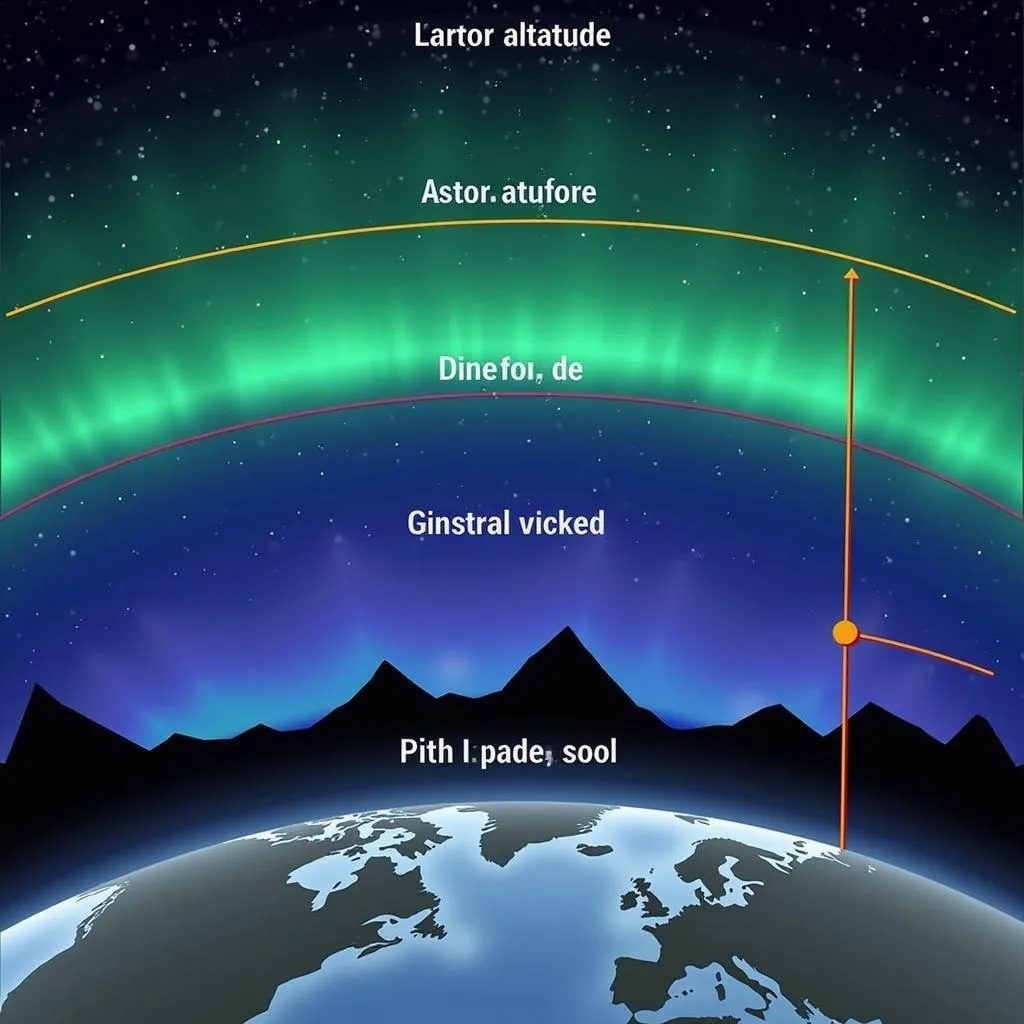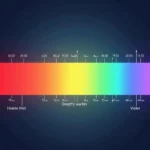The Northern Lights, also known as the Aurora Borealis, are a breathtaking celestial display of vibrant, dancing lights that illuminate the night sky. But have you ever wondered, “What colors are in the Northern Lights?” The answer is more complex and fascinating than you might think.
Unraveling the Spectrum: More Than Meets the Eye
While most people associate the Northern Lights with a bright, almost neon green, the truth is this natural phenomenon boasts a palette of colors. These dazzling hues are a result of energized particles from the sun interacting with different gases in the Earth’s atmosphere. Let’s delve deeper into this atmospheric magic:
-
Green: The most common color observed is a vibrant green, created when solar particles collide with oxygen at lower altitudes. This specific shade of green is so bright it’s often visible even in areas with light pollution.
-
Red: Higher in the atmosphere, oxygen produces a less common, yet equally stunning, red aurora. These crimson curtains of light are a rare treat for skywatchers.
-
Blue and Purple: Nitrogen, another abundant gas in our atmosphere, contributes to the color spectrum. Blue and purple hues emerge when nitrogen is energized, adding a touch of royal elegance to the auroral display.
-
Pink and Yellow: These colors are a beautiful blend of the primary colors, resulting from the combined emissions of oxygen and nitrogen at varying altitudes.
Factors Influencing Color Variations
The intensity and specific colors of the Northern Lights can vary based on several factors:
-
Solar Activity: The strength of solar flares and the speed of solar wind directly impact the energy of particles interacting with the Earth’s atmosphere, resulting in brighter and more diverse colors during periods of high solar activity.
-
Atmospheric Composition: The concentration of different gases in the atmosphere at different altitudes influences the colors produced.
-
Altitude: As mentioned earlier, the altitude at which the solar particles collide with atmospheric gases plays a significant role in determining the color emitted.
 Correlation between altitude and Northern Lights colors
Correlation between altitude and Northern Lights colors
Chasing the Elusive Colors
While green is the most prevalent color, witnessing the rarer reds, blues, and purples is a truly special experience. Here’s a tip from a seasoned aurora chaser: the darker the night and clearer the sky, the better your chances of observing the full spectrum of the Northern Lights. Locations with minimal light pollution offer optimal viewing conditions.
Northern Lights: A Symphony of Color and Light
The Northern Lights are a mesmerizing reminder of the dynamic interplay between the sun and Earth’s atmosphere. The next time you find yourself gazing up at this celestial spectacle, remember the fascinating science behind the vibrant colors that dance across the night sky. Each hue tells a story of energy, gas, and altitude, painting a breathtaking masterpiece that continues to captivate skywatchers for centuries.
If you’re eager to learn more about the captivating world of color and light, explore our other articles on intriguing topics like what color light does plants grow best in and what color is plasma energy. Discover the wonders that color brings to our world, from the natural phenomena above to the design choices that inspire us every day.

